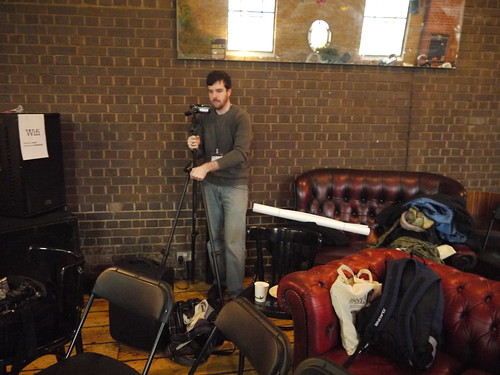Hembo Pagi, James Miles and Elena Kotoula (Archaeological Computing Research Group (ACRG), University of Southampton)
The demonstration will show how to collect accurate Reflectance Transformation Imaging [1] datasets. We will highlight the potential that this technique has within archaeological analysis through past examples of datasets generated by the Archaeological Computing Research Group at the University of Southampton. Furthermore we will also discuss the use of microscopic RTI [2], multispectral RTI [3] and transmitted RTI [4]. These three methods add to the potential of this technique and add the level of detail that can be analysed.
[1] Reflectance Transformation imaging allows for the enhancement in an objects surface, making ephemeral, difficult to photograph features visible. The method relies on a fixed camera and a fixed object with a series of images taken at differing light positions.
[2] Microscopic RTI, captured either with the Highlight RTI method or with a microscopic RTI dome, combines the advantages of close up photography and photomicrography with those of RTI. It allows for the recording of the shape and topography of the various components of artefacts at a microscopic scale. It meets conservation needs for limited human-object interaction, high quality and affordable visual analysis, microscopic levels of detail and advanced documentation.
[3] Multispectral RTI follows the same principle as a normal RTI but instead is captured with a UV-VIS-IR modified DSLR camera and adequate filters, illuminated by an infrared light source from different angles to produced infrared images. The synergy of RTI and Infrared imaging results in an enhanced methodology for non-destructive examination of antiquities and works of art and leads to different views of excavated artefacts, as well as painted works of art, which can be used for documentation, presentation, communication and research purposes.
[4] Transmitted RTI dataset is as series of images captured with transmitted illumination in the visible or the infrared spectral region. This methodology is inspired by transmitted photography, a set up proposed for conservation documentation of translucent materials, canvas paintings, mounded papyri, photographic material, and works of art on paper or archival material. Transmitted RTI provides an enhanced RTI visualization, complementary to reflected RTI.
The ACRG demonstration will take place during lunch on 23 Feb. (Saturday) at the conference venue. For more information, the demonstrators can be reached via the following contact details:
Hembo Pagi
James Miles
Elena Kotoula
 CAA International
CAA International
